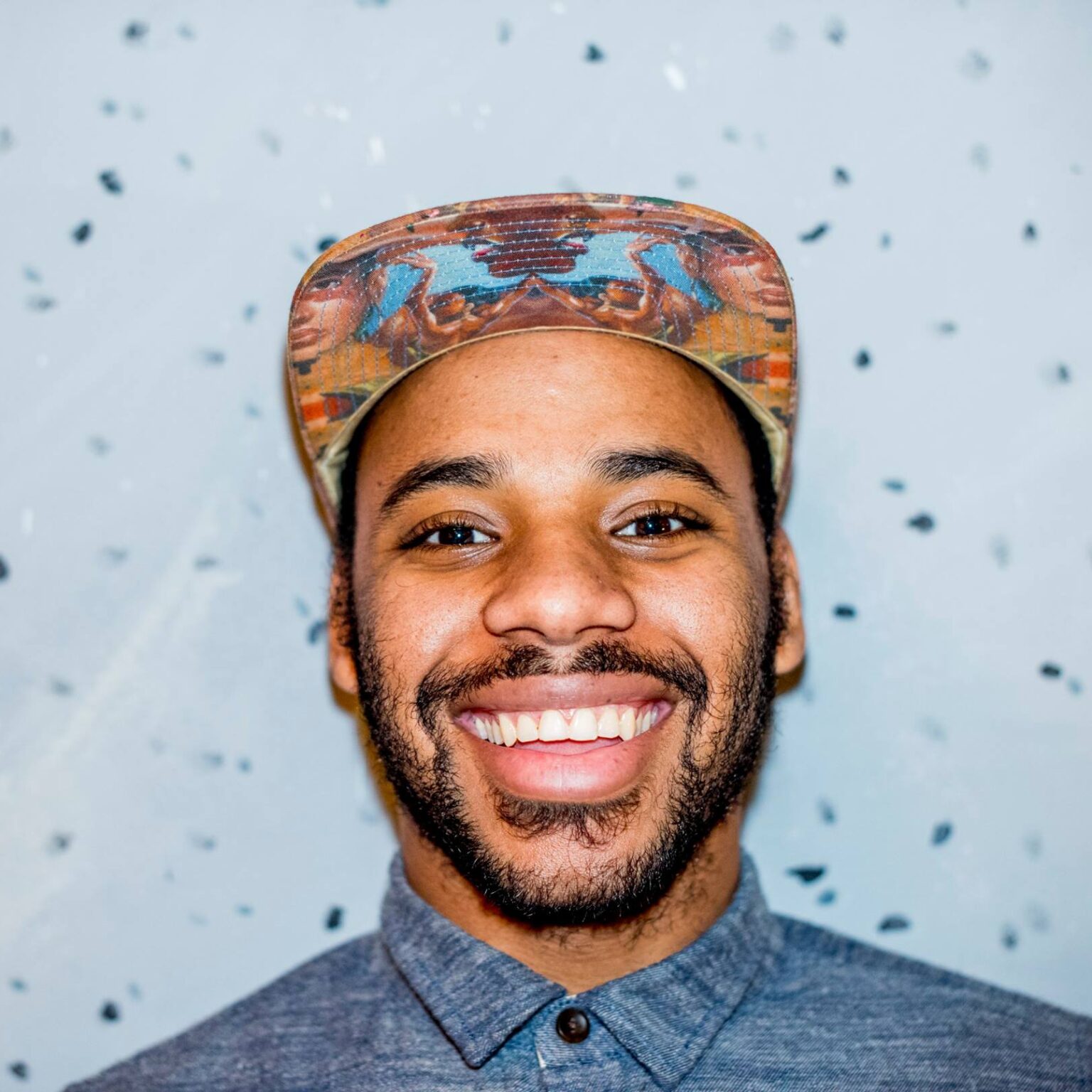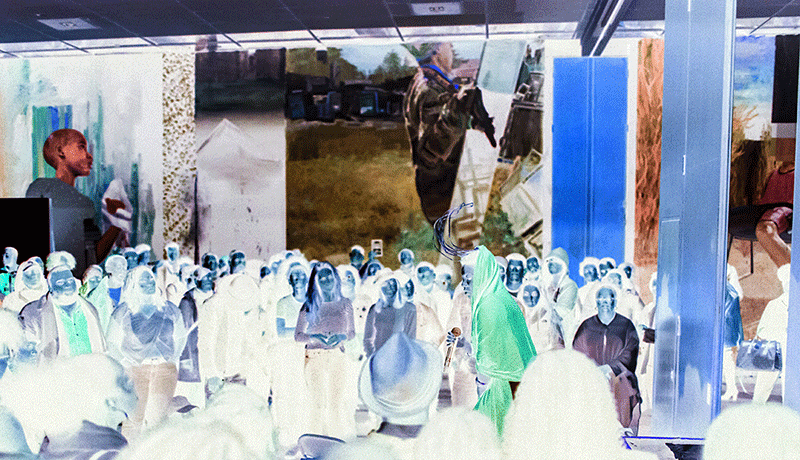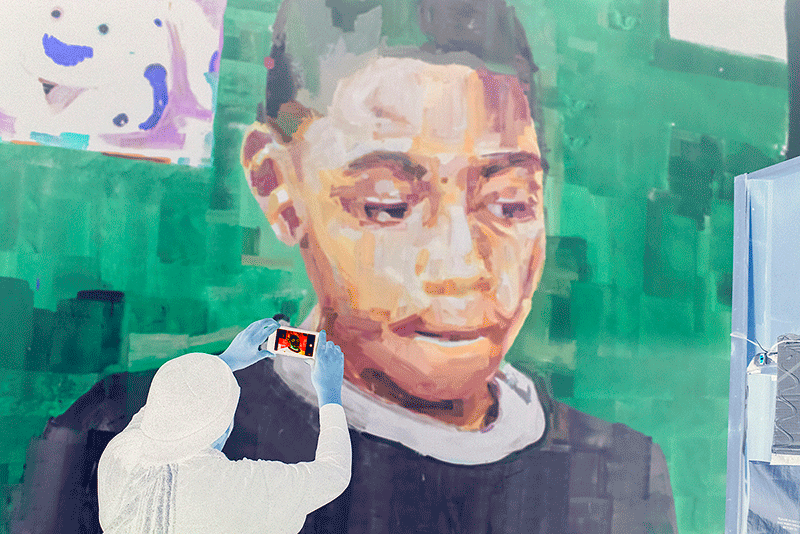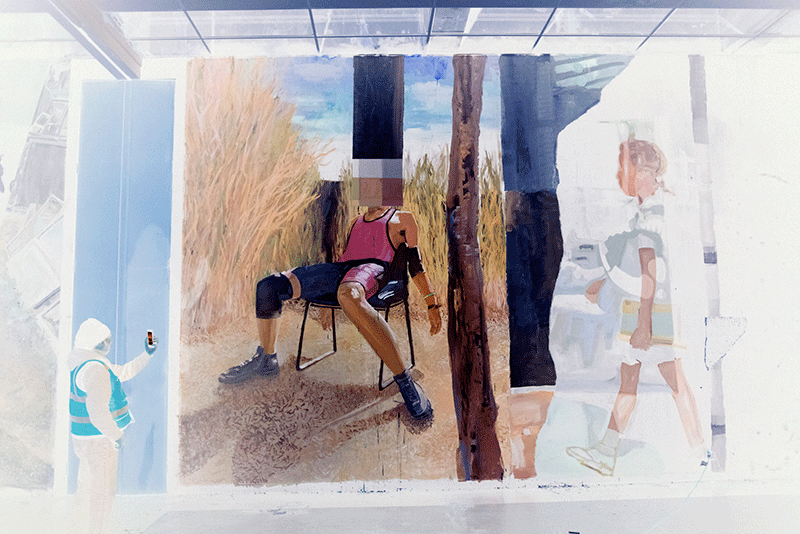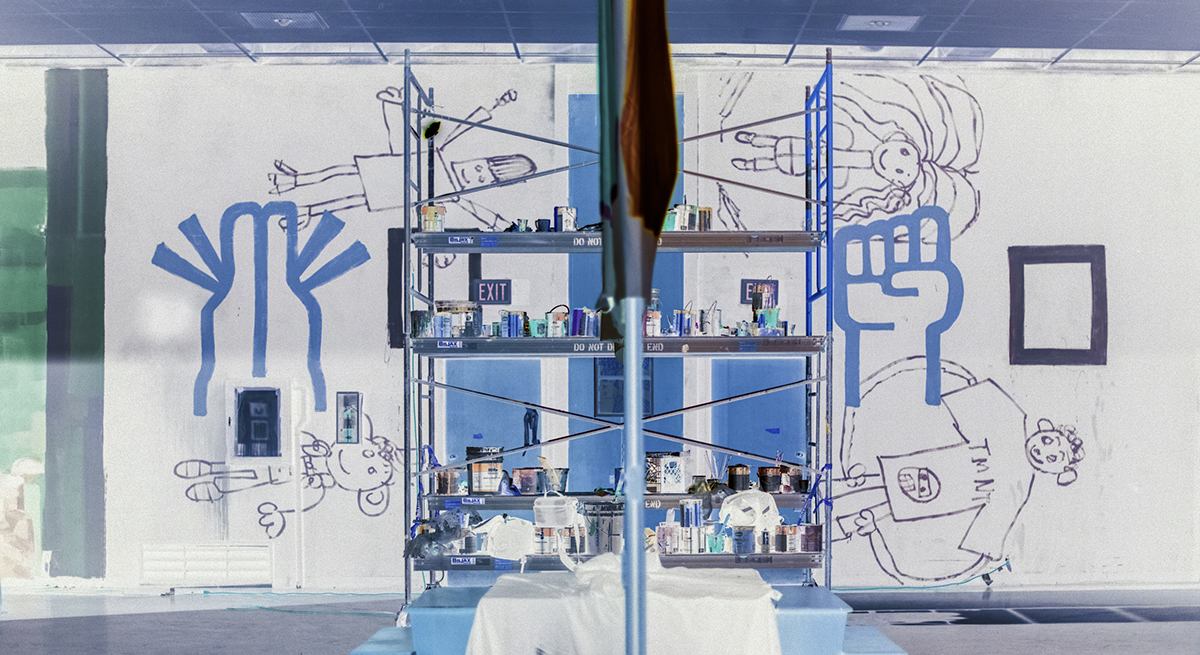
Christopher Paul Jordan, "The Prayer of Power," 2017; mixed-media installation; 20 x 60 x 55 ft
Christopher Paul Jordan
Artist Statement
Using my background as a muralist and community organizer, I construct living portals and time-capsules for displaced peoples to reintegrate our stories across dimensions. I’m interested in Black congregational space and how infrastructure shapes what is knowable.
During the advanced stages of gentrification, Black churches precipitate as the final structural vestiges of African American communities to remain in the urban landscape. Within an “new” era of mass-displacement, what could it mean to radically reimagine our centers for gathering/ritual/dialogue in the urban context? My current installation series explores this question through an “imaginary” organization (Church of Black Liberation), which produces active spatial prototypes for Black interfaith sanctuaries. Utilizing collective economics strategies and syncretic ritual approaches toward intersectional community building and diasporic sovereignty, I’m interested in the convergence technologies of our spiritual inheritance and the many ways that we create space for one another.
While At Headlands
I’m currently engaged in a series of paintings telegraphing Black spiritual practice between the US and Caribbean. At Headlands I’m extending this work by contemplating the parallel forces of displacement at play between the Bay Area and the Puget Sound, taking inspiration from our own unique genealogies of spiritual and political marronage. Through dialogues with community organizers, artists, curators, architects, healers, and historians in the Bay Area, I’m seeking to better understand the ways our communities navigate forced migration, and what our tactics of continuance teach us about ourselves. Meanwhile through participatory action research, I’m building upon a semi-formal archive of public interventions that Black cultural workers have made in, from, about, and through the Black Church over the past century-and-a-half.
